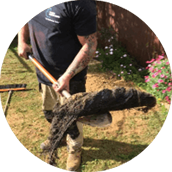Roof drains and roof drainage are important in helping water properly leave a building and property. When it rains the roof drainage systems will guide the rainwater towards the stormwater drains. As a part of a home’s water drainage system, there are key factors that building owners need to consider when installing roof drains. Here at Optimised Plumbing Services, our Emergency Plumber workers are experts at working with drainage systems and will repair and install them.
Roof drains and roof drainage are installed in a home to help water and weather elements leave the property. They are installed around the outside of the building and divert debris and water away from the home. Roof drains and roof drainage consists of gutters, downpipes, pits and other drains and pipes. Different roofs have different roof drains and roof drainage, including guttering, scupper, inner roof or siphonic roof drains.
What are the Different Types of Roof Drains and Roof Drainage?
There are four types of roof drains and roof drainage and they will be installed depending on the multiple factors. The volume and frequency of rainfall, roof type, building codes, roof loads, drain locations and additional factors influence what roof drains are installed.
Guttering Systems
Guttering systems are used in most homes as they are suited for most roof shapes and angles. This drainage system is easy to install while being affordable but is more likely to experience blockages. Gutters are easily seen on the side of roofs while a downspout is installed along the side of the home.
Scupper Drains
These types of roof drains are mainly applied for flat roofs which have a barrier along their perimeter. Scupper drains consist of channels and open holes that are located on the edge of the roof. The roof slopes downwards to the scupper and this allows water to escape from the scupper drain. A downspout can be connected to a scupper system or a separate pipe will lead the water away from the place.
Inner Roof Drains
Flat roofs can also have inner roof drains where a low section or channel will collect and divert water to a concealed drain. An inner roof drain will lead the water to an underground drainage system. Benefits of inner roof drainage are that it is hidden from view while being able to withstand freezing temperatures. A downside with inner roof systems is that they need maintenance regularly to ensure that there are no problems.
Siphonic Roof Drains
Siphoning is used with this type of roof drainage and is the fastest way to divert water away from the building. These roof drains are mainly used on flat commercial roofs but can be installed in residential areas. Minimal drains are present but all the pipes lead to a single pipe and it will efficiently flow water away. There is often little maintenance or issues with siphonic roof drainage but they can be more costly to install.
What are the Different Parts of Roof Drainage?
Roof drainage contains many different parts and sections, for average roof drains and roof drainage the different parts include:
- Gutters – these catch and collect the rainwater that falls into them and from the roof. These are noticeable as they sit on the outside of the perimeter of the roof.
- Downpipes – these connect from the gutters and angle the water down and out of the building.
- Pits – these pits are where the rainwater goes after falling down the downpipe and will collect in there for a short period of time.
- Drains and Pipes – after the water has entered the pits they will flow properly out of the property through drains and pipes underground.
How do I Clean Roof Drains?
For the different roof drain types, they will need to be cleaned in different ways to ensure water can flow through them correctly.
Guttering Systems
Gutters will need cleaning regularly as debris, such as sticks and leaves, become clogged in them. The chance that ice builds up in the gutters can occur if water stays in the gutters and freezes in colder weather. Scooping out blockages from gutters is important and checking the downpipes for clogs is needed as well.
Scupper Drains
These types of roof drainage systems often do not need a large amount of maintenance work. Often performing a quick inspection to ensure there is no debris in the scuppers is needed.
Inner Roof Drains
Inner roof drains should be inspected throughout the year to ensure no debris is within the sieves. If the sieves need to be replaced due to damages or blockages then it is important to do that.
Siphonic Roof Drains
Siphonic roof drains will often need an inspection to ensure no debris has been stuck inside them. Remove any debris carefully and make sure to look for any siphonic roof drainage system issues.
Reliable Roof Drains and Roof Drainage Services
Optimised Plumbing Services offers our roof drains and roof drainage services to Sydney locals. Our fully qualified plumbers will install, repair and perform maintenance on all types of roof drainage units. We make certain that the service is completed efficiently while properly and safely working on the drainage system.
Our plumbers working with roof drains will work across all of Sydney, including South Western Sydney and Inner West. We are also experts at handling Blocked Drain issues, including resolving blocked drainage systems.
For the most trusted roof drains and roof drainage services – rely on Optimised Plumbing Services!
















